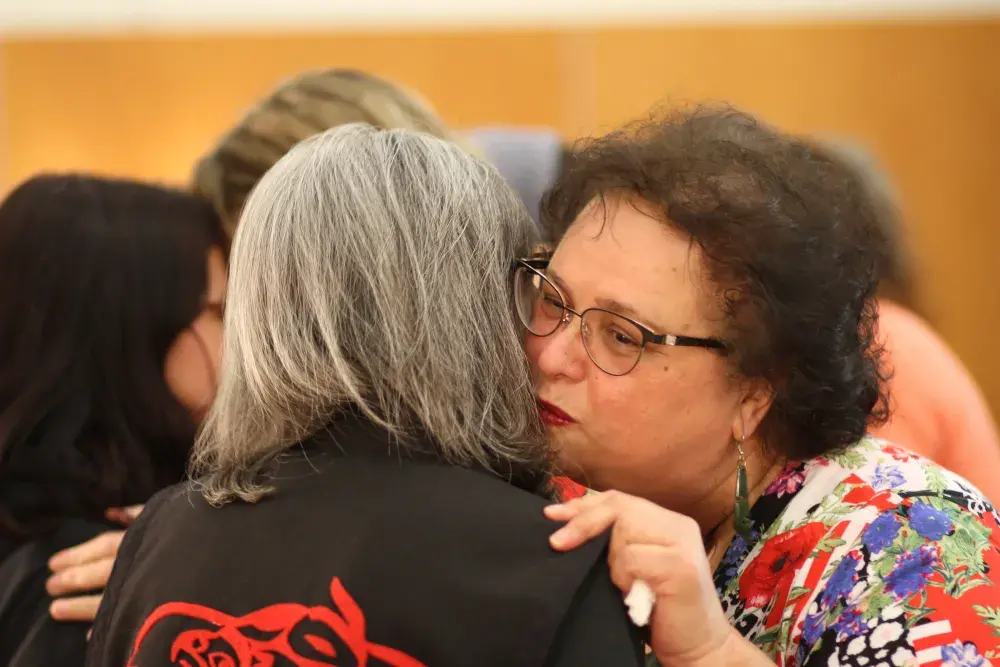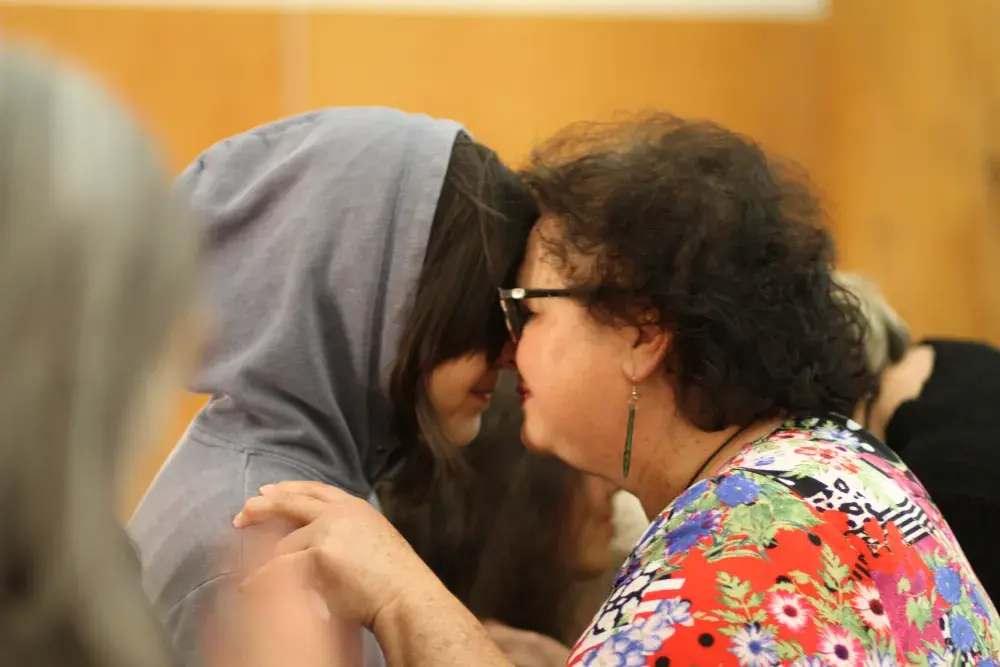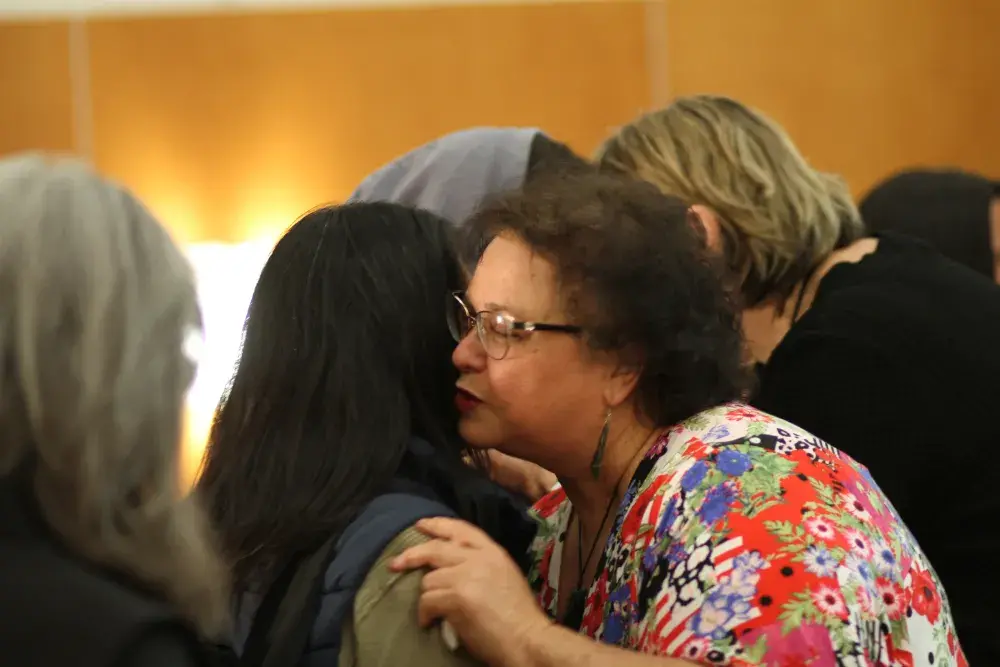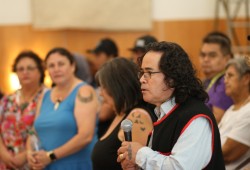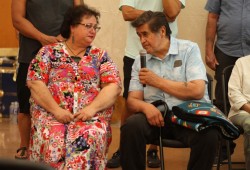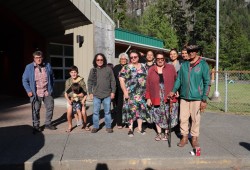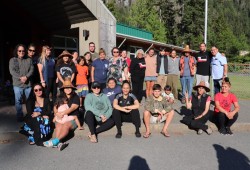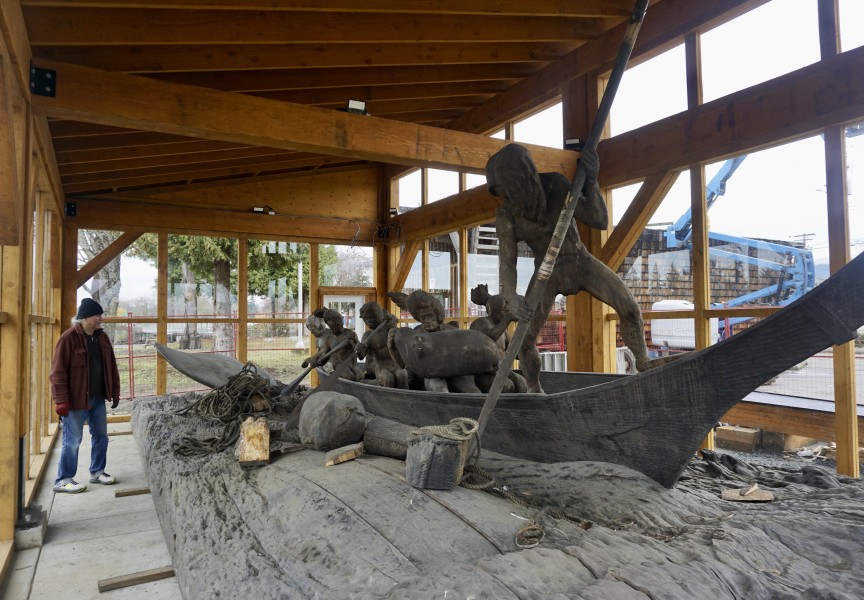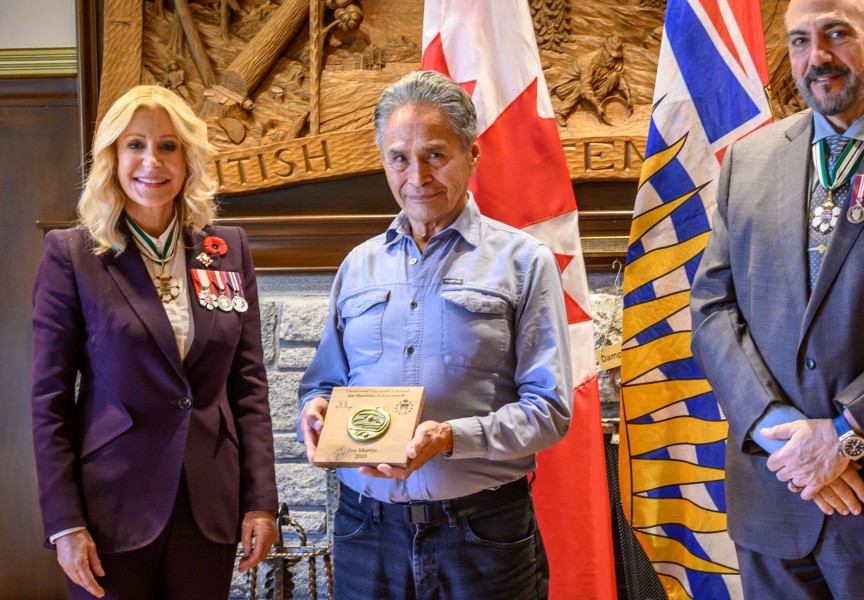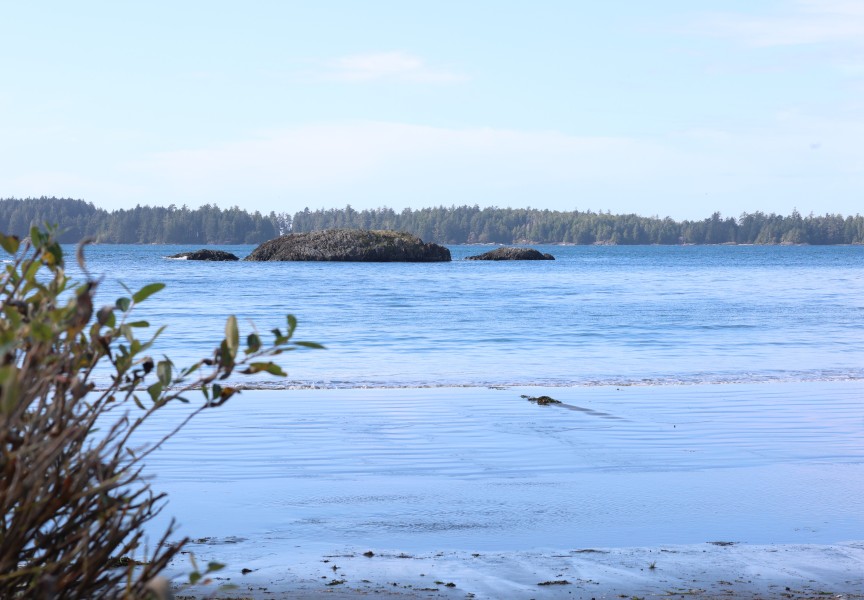The Smith family of Ehattesaht have heard a story that’s been passed down the generations from grandparent to grandchild. It is the story of three men that traveled a great distance, finally paddling ashore in Ehattesaht territory where they were welcomed and invited to stay.
“When I was a teenager, my Grampa Mo Smith told me the story about the Māori coming to live with us,” said Ernie Smith, now an elected councillor at Ehattesaht/Chinehkint. “He didn’t say when it was, but he said there were three of them and they stayed for three years.”
Nobody knows how far back the story goes – but it seems it stretches back to a time before contact with European explorers. After three years, the Māori men were set up with new canoes and provisions. They left to cross the ocean back to their New Zealand home, taking their Ehattesaht wives along.
Beginning in the 1990s, artists Kevin Cramner and Tim Paul went to New Zealand to present a totem pole they made. Paul is a first cousin to Ernie Smith. While he was in New Zealand he shared the story that his cousins grew up hearing on Vancouver Island.
The story goes that three Māori men landed at the village of t̓iławis, also known as Yellow Bluff on the north shore of Esperanza Inlet. Smith says this is where his family comes from, they are tiłaawisʔatḥ.
During the trip to New Zealand in 1990 the Nuu-chah-nulth delegation learned that there is a similar story that’s been shared over the generations on the Māori side.
“The story was carried forward on both sides of the ocean for generations,” said Smith.
Years later, Dr. Lily George, a Māori woman, was writing a paper on the pole that Tim Paul and Cramner made. During her work George connected with Ernie’s cousin Tim Paul, telling him she hoped that they are related. It turns out that they are.
George’s mother had tested with Ancestry DNA before her passing. Both Dawn and Ernie tested their DNA, and their results came with surprises.
“That’s when we found out we had Māori blood,” said Ernie.
Both he and Dawn have small percentages of Māori and Hawaiian blood, which is consistent with the oral history.
Ernie said he knew back in 2015 that he had Pacific Islander DNA, both Māori and Hawaiian. Dawn’s recent Ancestry DNA test shows she has one per cent Hawaiian heritage. Among Ernie’s DNA matches was Lily George’s mother, Manu Reti, listed as a possible fourth cousin.
Using online tools available to the public, if Ernie Smith and Manu Reti are indeed fourth cousins, they share a set of great-great-great grandparents and they go back five generations. Since the times between generations are variable, based on what age parents are when they have babies, five generations ranges from 100 to 200 years. This could mean that the Māori may have landed on the Ehattesaht beach anywhere from the mid 1700s to the mid 1800s.
The connection is an old one and at the edge of no longer registering as matches for younger Smith and Māori generations. So, it is timely that this discovery was made when it was.
“I am really happy to have this connection. The Smith family has expanded hugely,” said Ernie Smith.
And it proves that oral history is strong and accurate.
“I’m really grateful for them, passing the stories down, this has proven to be accurate, 100 per cent, in this case,” he said.
The people of Ehattesaht hosted a small group of Māori visitors from New Zealand in Zeballos on June 18. As people sat down to dinner Ernie Smith told the people about the Māori visitors that arrived on Ehattesaht shores more than 200 years ago. Stranded on Vancouver Island for three years, the three Māori men lived with the Ehattesaht, taking Ehattesaht wives and starting families.
Three years later, ocean conditions were favorable for their return trip to their homeland thousands of miles across the Pacific Ocean. They left the village with their wives aboard new canoes and all the supplies they needed, never to be seen again.
But the stories remained, passed down the generations in Nuu-chah-nulth and in Māori communities.
During their stay in Ehattesaht territory, the 11 Māori guests stayed at Esperanza and visited the ancient village of t̓iławis, retracing the steps their ancestors took more than a century ago. The group spent three days in Ehattesaht territory.
“Lily really wanted to go to Zeballos and get to know the homelands,” said Dawn. “It was a pretty powerful experience – emotional.”
The carved panels outside the Zeballos School are an artists’ depiction of the historical Māori visit.
“Uncle Earl (Smith) wrote the story down and Ehattesaht artist Vince Smith used the story as inspiration for the carved panels outside the school in Zeballos,” said Ernie.
The Smiths and their Māori relatives posed outside the school, in front of those panels before they left for Esperanza.
Both Ernie and Dawn plan to make a trip to New Zealand in the next year or so. Dawn works with Tim Paul and his educational culture society, Ticmup. They are working to create cultural exchange opportunities for Nuu-chah-nulth youth, allowing them to connect with the Māori.
“This is so exciting, to have Māori in our territory. They’re our family, our blood,” said Ernie Smith.

